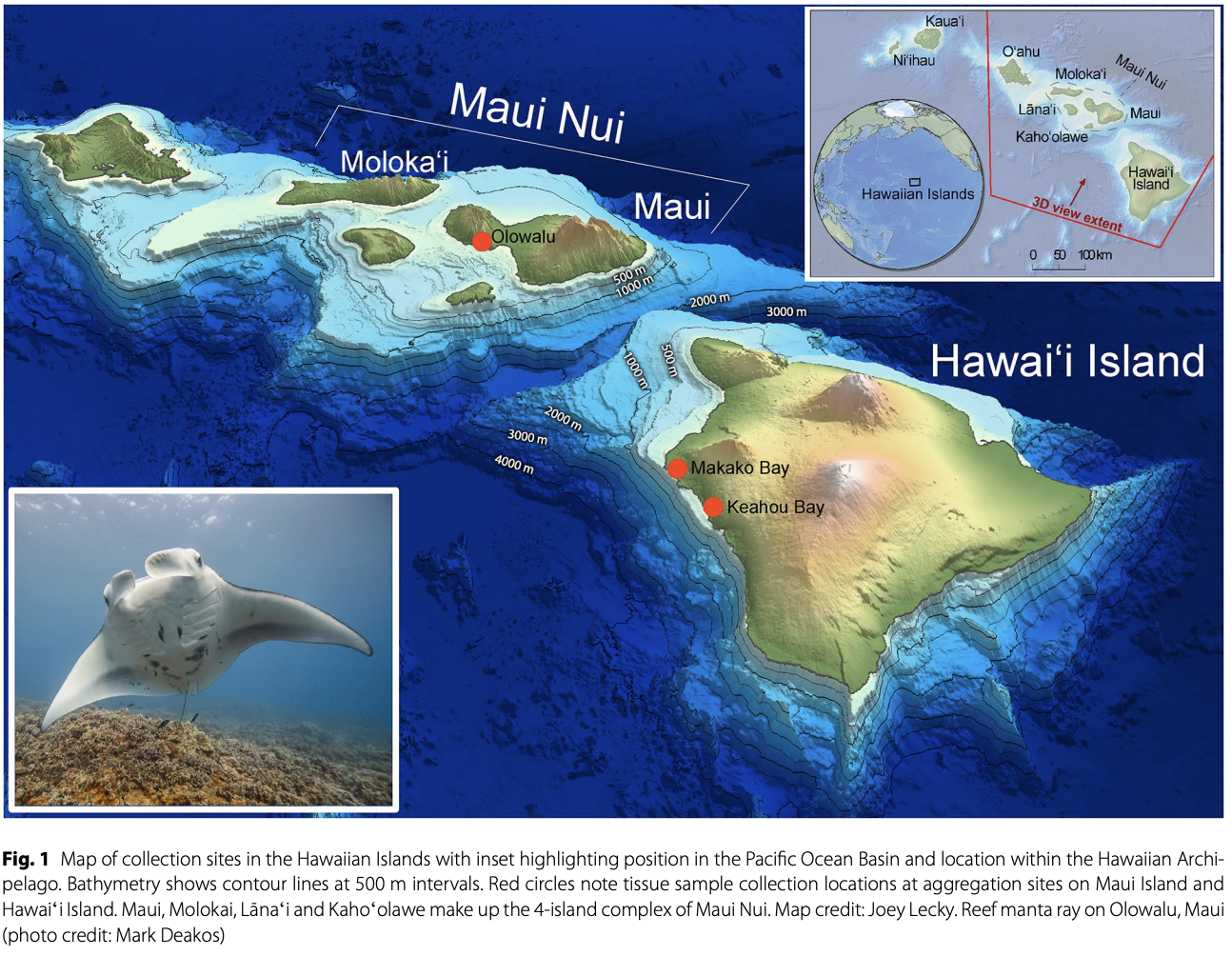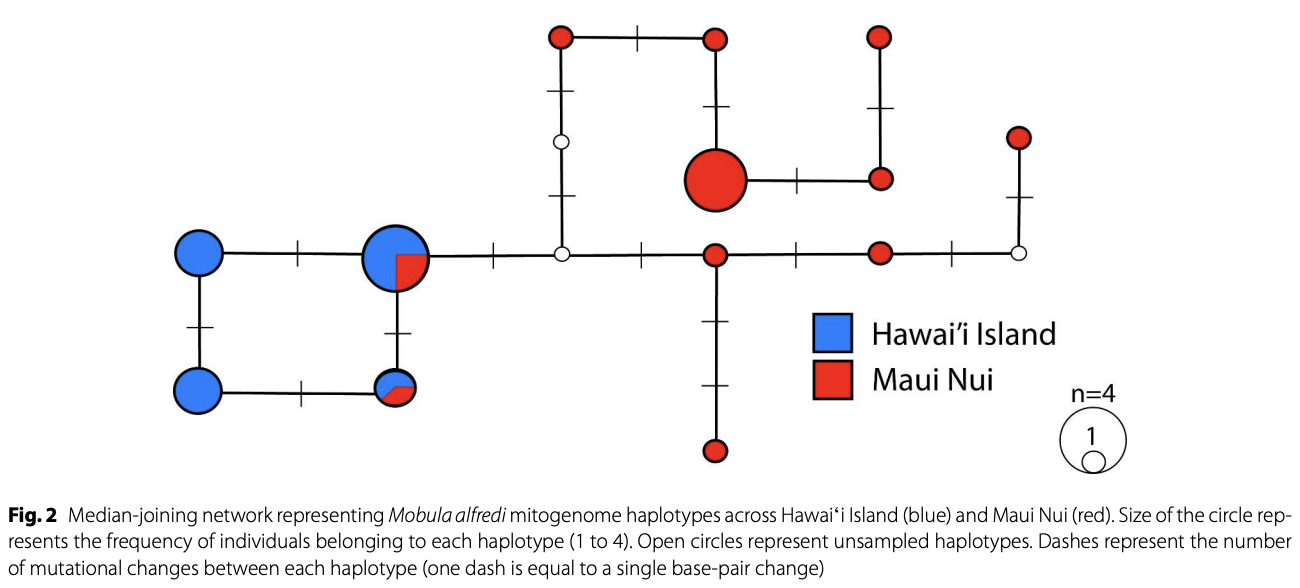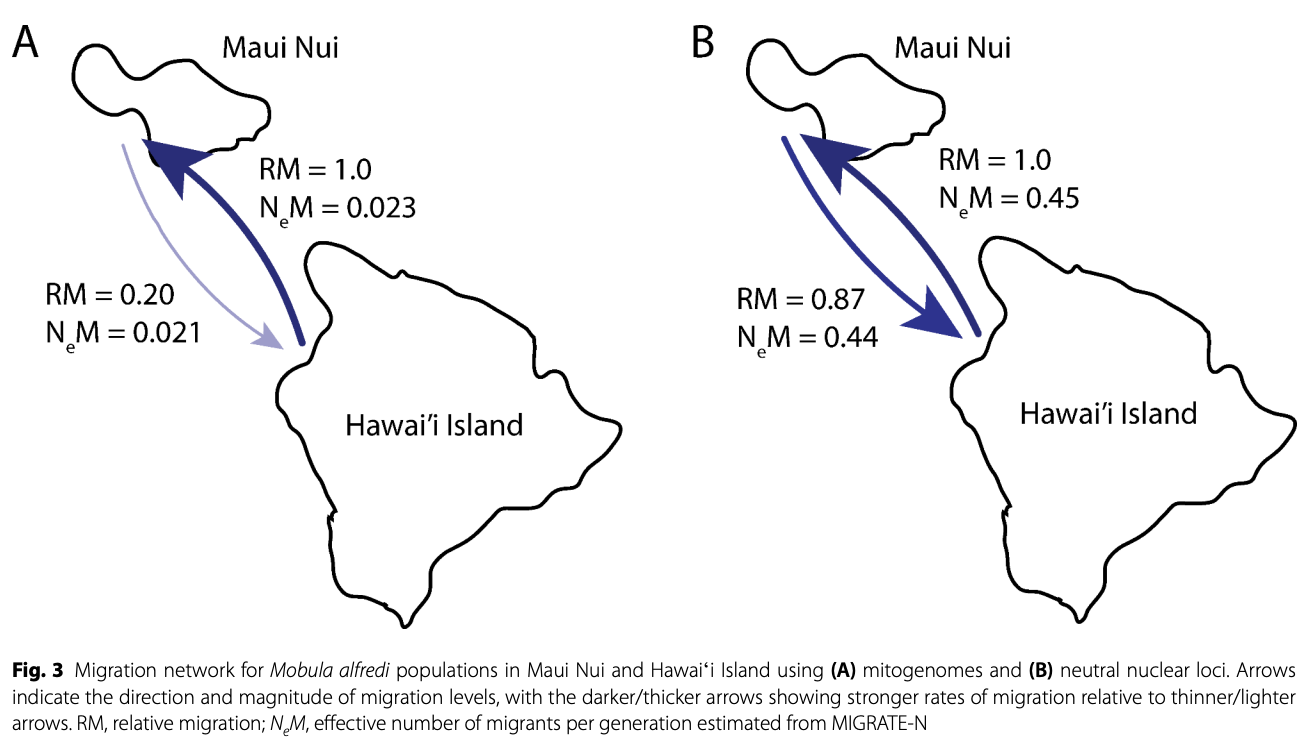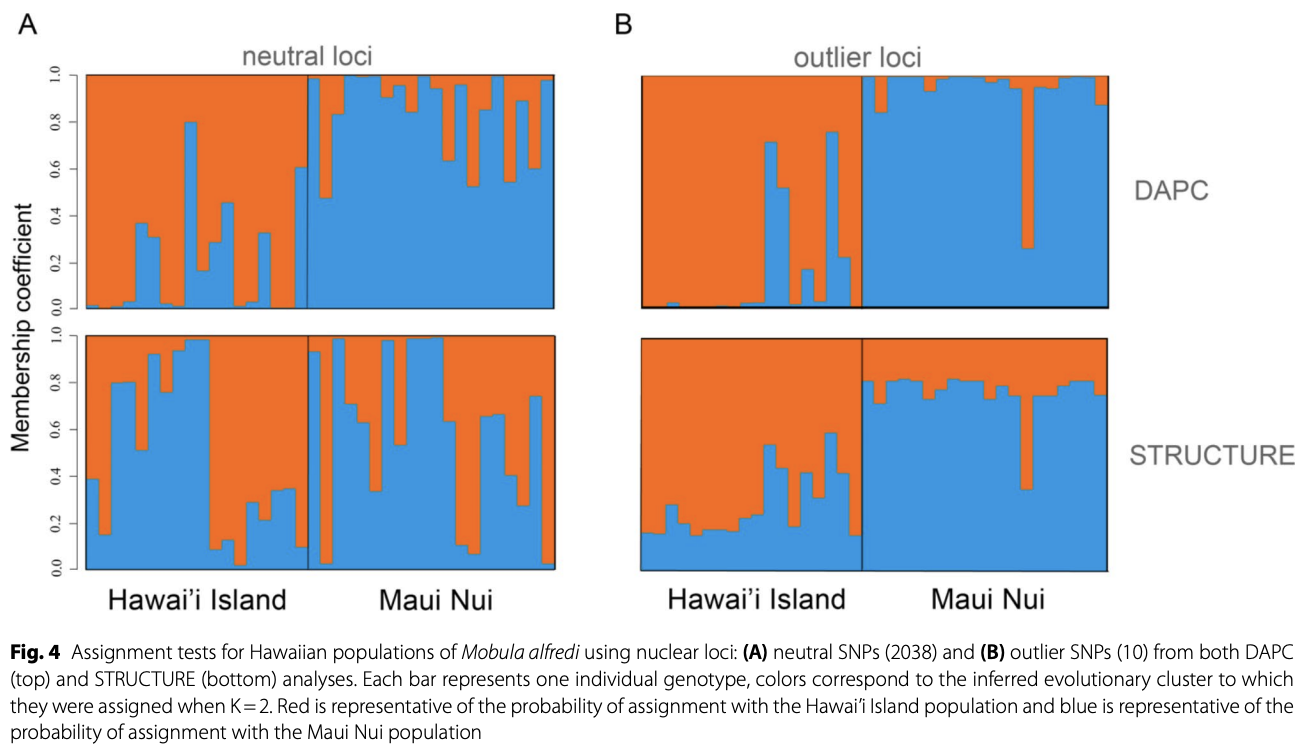Genomic evidence indicates small island resident populations and sex-biased behaviors of Hawaiian reef Manta Ray
July 2023
Jonathan L. Whitney, Richard R. Coleman & Mark H. Deakos
Keywords: Hawaiian Islands • Philopatry • Devil Rays • Genetic Connectivity • Genomics • Mitogenome • Dispersal




Summary: Reef manta rays (Mobula alfredi) are vulnerable due to their slow growth and low reproductive output. Previous studies indicated high genetic connectivity among populations along continental shelves, but Hawaiian populations appeared isolated. This hypothesis was tested using genetic data from M. alfredi in Hawaii and Maui Nui. The analysis revealed significant divergence in mitochondrial DNA but not in nuclear DNA, suggesting strong female philopatry and limited male-mediated migration. Effective population sizes were estimated to be small. The findings indicate genetically isolated resident populations of reef manta rays in Hawaii, making them susceptible to region-specific threats. Island-specific management strategies are necessary for their long-term survival.
Abstract
“Background Reef manta rays (Mobula alfredi) are globally distributed in tropical and subtropical seas. Their life history traits (slow growth, late maturity, low reproductive output) make them vulnerable to perturbations and therefore require informed management strategies. Previous studies have reported wide-spread genetic connectivity along continental shelves suggesting high gene flow along continuous habitats spanning hundreds of kilometers. However, in the Hawaiian Islands, tagging and photo-identification evidence suggest island populations are isolated despite proximity, a hypothesis that has not yet been evaluated with genetic data.
Results This island-resident hypothesis was tested by analyzing whole mitogenome haplotypes and 2048 nuclear single nucleotide polymorphisms (SNPs) between M. alfredi (n=38) on Hawaiʻi Island and Maui Nui (the 4-island complex of Maui, Molokaʻi, Lānaʻi and Kahoʻolawe). Strong divergence in the mitogenome (ΦST=0.488) relative to nuclear genome-wide SNPs (neutral FST = 0.003; outlier FST = 0.186), and clustering of mitochondrial haplotypes among islands provides robust evidence that female reef manta rays are strongly philopatric and do not migrate between these two island groups. Combined with restricted male-mediated migration, equivalent to a single male moving between islands every 2.2 generations (~64 years), we provide evidence these populations are significantly demographically isolated. Estimates of contemporary effective population size (Ne) are 104 (95% CI: 99–110) in Hawaiʻi Island and 129 (95% CI: 122–136) in Maui Nui.
Conclusions Concordant with evidence from photo identification and tagging studies, these genetic results indicate reef manta rays in Hawaiʻi have small, genetically-isolated resident island populations. We hypothesize that due to the Island Mass Effect, large islands provide sufficient resources to support resident populations, thereby making crossing deep channels separating island groups unnecessary. Small effective population size, low genetic diversity, and k-selected life history traits make these isolated populations vulnerable to region-specific anthropogenic threats, which include entanglement, boat strikes, and habitat degradation. The long-term persistence of reef manta rays in the Hawaiian Islands will require island-specific management strategies.”
Author Affiliations
National Oceanic and Atmospheric Administration
Department of Marine Biology and Ecology, Rosenstiel School of Marine, Atmospheric, and Earth Sciences, University of Miami
Hawaii Association for Marine Education and Research
Funded by
Sven and Krista Lindblad
Cooperative Institute for Marine and Atmospheric Research (CIMAR)
NOAA’s West Hawai‘i Integrated Ecosystem Assessment Program
University of Texas at Austin’s Provosts Early Career Fellowship
NOAA’s Pacific Islands Fisheries Science Center

